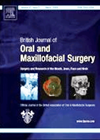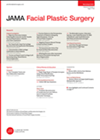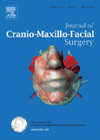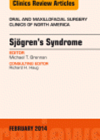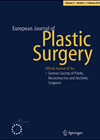
Journal Reviews
Role of copper ions in drinking water in the pathogenesis of oral submucous fibrosis: the missing link in the aetiopathology?
Often a breakthrough link in the understanding of the aetiopathogenesis of a hitherto common pathology that has been evading the medical community may not come from the hi-tech labs of the developed world but from the intelligent investigations from a...
The supraclavicular artery flap for head and neck reconstruction
Free tissue transfer has been manifested to be the primary reconstructive tool for major ablative defects of the head and neck. However, many patients are not good candidates for free tissue transfer because of their medical comorbidities or lack of...
A conservative approach to treat ameloblastoma
Ameloblastoma is a relatively rare odontogenic tumour that is benign but locally aggressive. Additionally they tend to recur locally. These are rare accounting for 1% of oral tumours and occur almost exclusively in the jaws. It is more common in...
Reconstruction after parotid surgery
This is a retrospective study from Naples, Italy. The authors analyse and compare patients that had benign parotid disease that were reconstructed with three different techniques. Between February 2002 and March 2009, 224 patients were included; these patients had either...
Not all faces are alike
The author examined 108 photographs of faces taken in an exact front view, in order to look for different patterns of facial shapes: round, square, heart shaped, oval and long. The author recognised that this was a qualitative analysis and...
Complications of plates in fibula free flaps
Good functional reconstruction of the mandible remains challenging for the maxillofacial surgeon. The fibula osteocutaneous flap is widely used as a method of mandibular reconstruction and it can withstand multiple osteotomies and a thus requires hardware to adapt and hold...
Immediate planned reconstruction following complex craniofacial reconstruction
The immediate reconstruction of 3-D craniofacial defects is extremely difficult and can be more difficult than the ablation. Perfect shape and symmetry is required. In the past decade this has largely improved with CAD/CAM engineering. The authors report a one-step...
Extranodal NK/T cell lymphoma in the head and neck
The authors present a retrospective single institution review of patients with a very rare variant of non-Hodgkin lymphomas (NHL). They report on the occurrence, clinical course and outcomes of their patients with natural killer/T-cell lymphoma (NKTCL) nasal type. Sixty-three patients...
Hyposalivation in the oral cavity
This article is a comprehensive but succinct look at the effects of hyposalivation secondary to Sjogren's syndrome in the oral cavity. These publications are divided into dental manifestations, oral mucosal manifestations and other oral manifestations. The authors discuss caries, gingivitis,...
A comparison between the American European Consensus Group and the American College of Rheumatology classification criteria for Sjogren's syndrome
This article highlights the challenges in diagnosing Sjogren's syndrome. As is pointed out in the introduction, there is no one gold standard for diagnosis and since 1965, there have been 11 sets of classification criteria for Sjogren's syndrome. The authors...
Reconstruction after maxillectomy
Maxillectomy for tumours of the paranasal sinuses creates large, complex defects. Whilst free flaps appear to be the preferred method of reconstruction, the best type is unclear. This article discusses a single unit’s experience using different free flaps for reconstruction....
A useful regional flap for head and neck reconstruction
This article explains the experience of the head and neck department of the Massachusetts Eye and Ear Infirmary with a seldom used regional flap, the supraclavicular artery (SCA) fasciocutaneous flap. This versatile flap is based on the supraclavicular artery, a...

